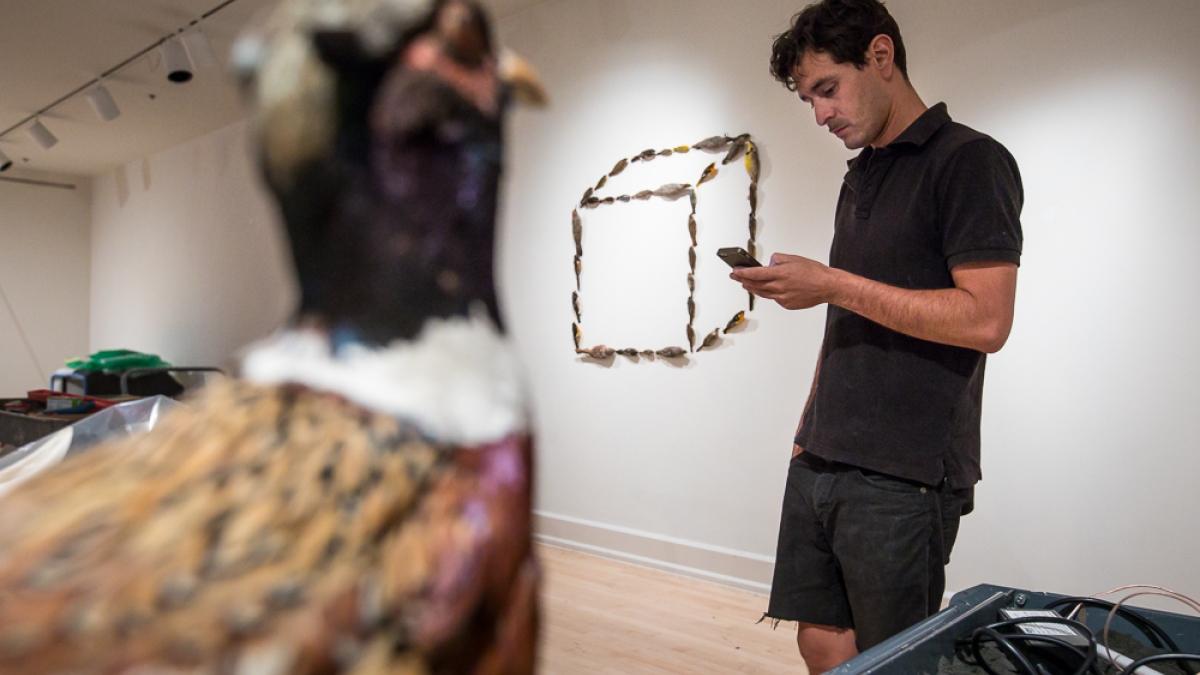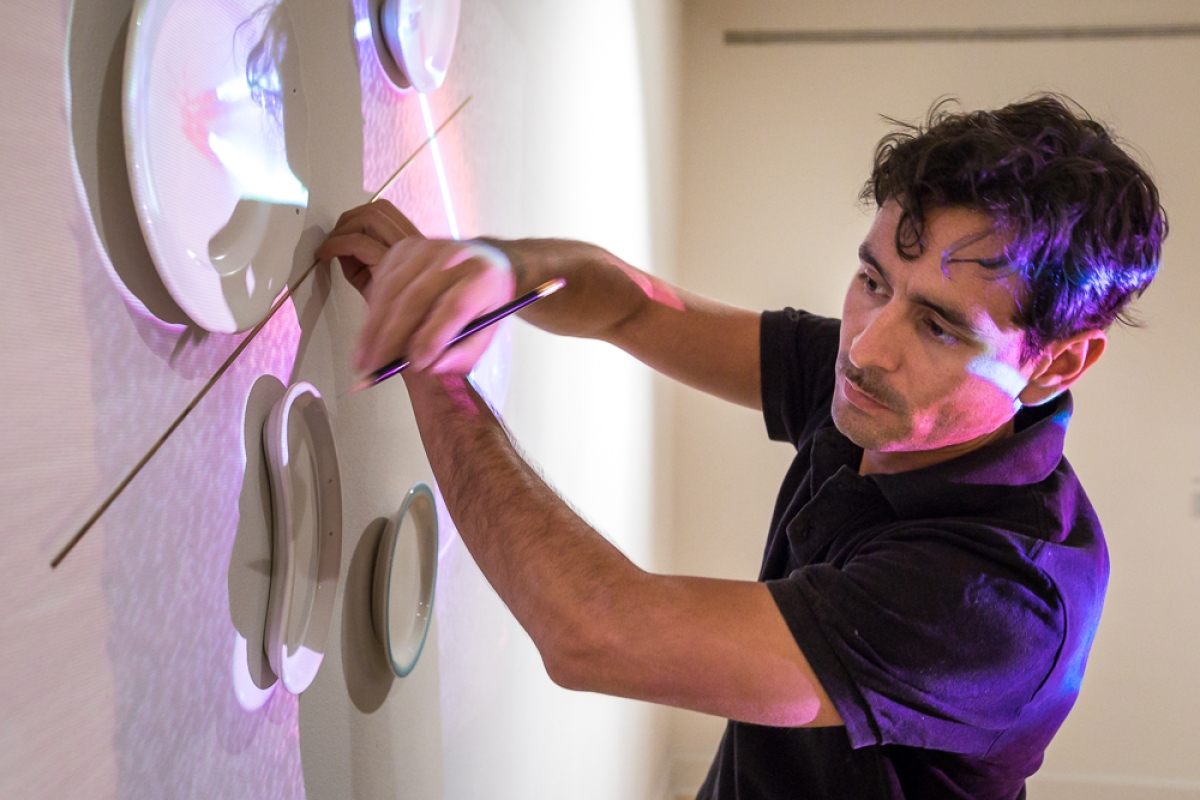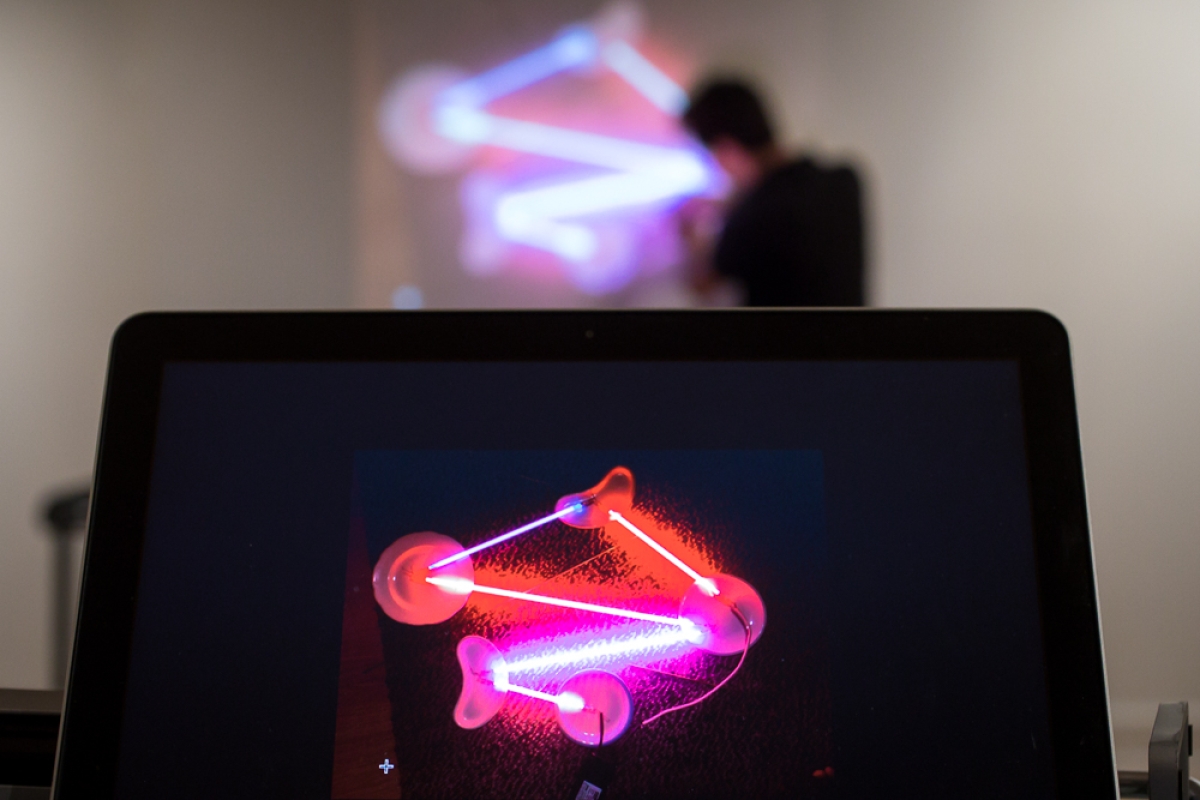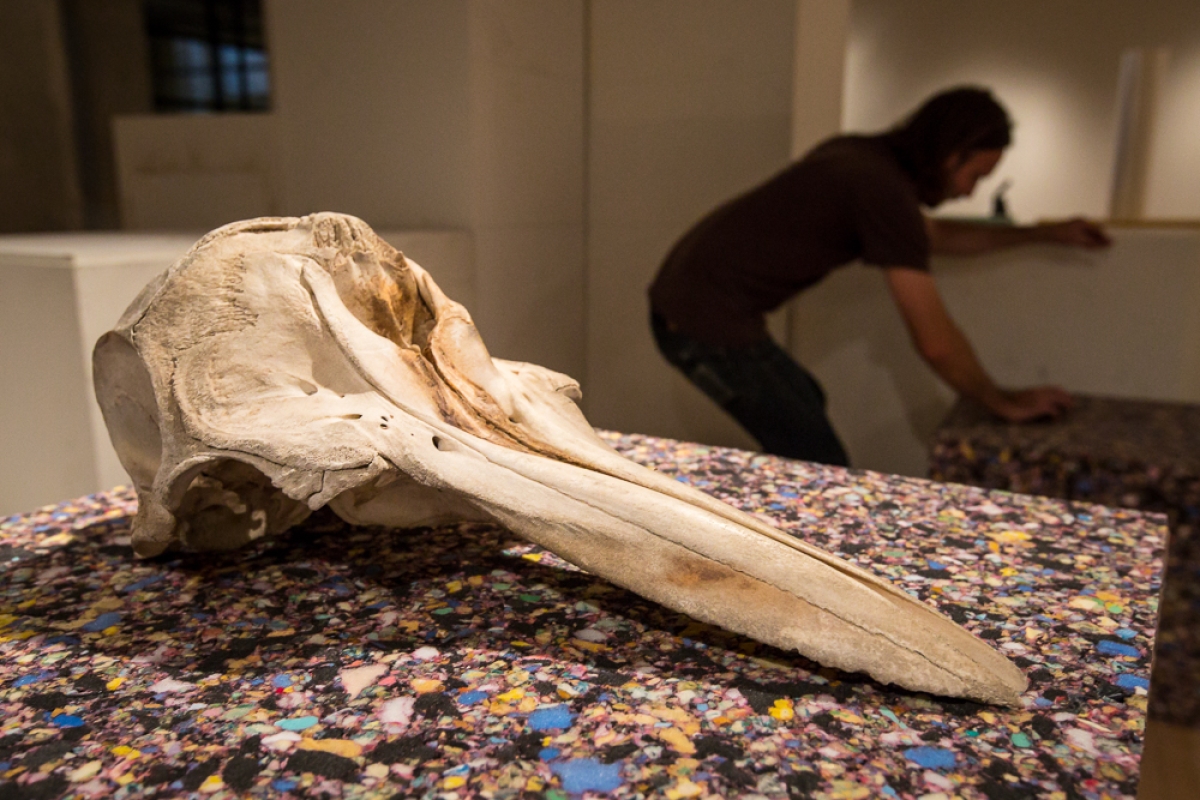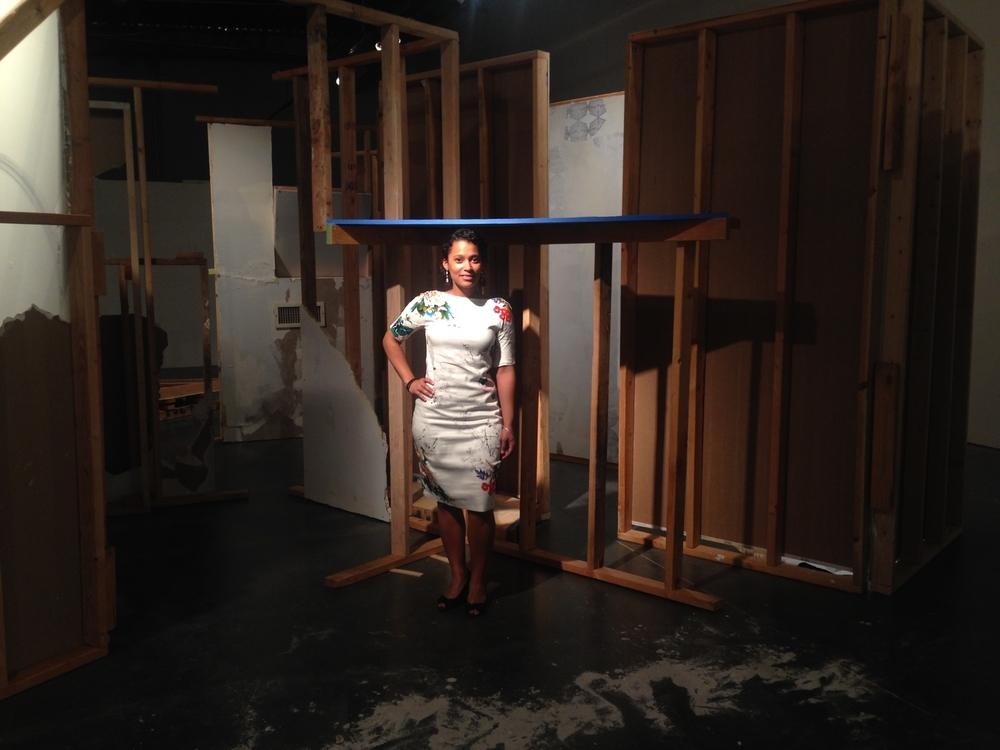Neon and taxidermy animals usually scream gun shop, feed store or Arizona honky-tonk.
This time it says art.
“Art can be anything — good taste, bad taste, avant-garde, digital — it’s just material,” said Gabriel Rico a Mexico-based multimedia artist making his U.S. debut this week at the ASU Art Museum in Tempe.
“An illusion to create all kinds of possibilities.”
The 36-year-old artist has created many illusions and possibilities in his new show, “DEAD, DEAD, LIVE, DEAD,” which will open June 10 and remain up through Sept. 2.
An opening reception will be held from 4 to 6 p.m. Thursday, June 1, with Rico present. The event is free and open to the public.
For Rico’s first museum exhibition in the United States, he has borrowed objects from ASU’s Life Sciences program to create a one-of-a-kind installation. He uses materials such as taxidermy animals, bones, pelts, neon, projection, ceramic plates and other objects to address the relationship between nature, architecture and the future ruins of civilization.
It sounds a bit esoteric, but there’s also lots of humor and absurdity in Rico’s work. Don’t be surprised if you see an entranced fox sitting and staring at a hole in the wall, a formation of small birds outlining a 3-D box or a fowl clutching fruit above a Coke bottle.
“It’s playful and it’s fun, but there’s a lot of surrealism and still-life influences from the 16th and 17th centuries in his work,” said Julio Cesar Morales, ASU Art Museum curator. “He’s one of the best artists of his generation coming out of Mexico.”
Rico is visiting the Valley as part of an international artist residency and cultural exchange between the cities of Phoenix and Guadalajara, Jalisco, organized by the ASU Art Museum, the CALA AllianceCALA stands for Celebacion Artistica de las Americas, and is a non-profit organization that creates shared arts experiences that encourage cultural understanding between people of the Americas. and Programa Annual de Open Studios in Mexico.
Called the GDL-PHX Residencias Artisticas, it will offer fully sponsored residencies to artists from Guadalajara to travel and work in Phoenix, and to Latino/a artists from Phoenix to travel and work in Guadalajara.
The goal is to provide opportunities for artists to grow their creative practice, experiment with new approaches and create a dialogue between Phoenix and Guadalajara to foster deeper cultural and artistic knowledge, according to CALA Alliance Curator Casandra Hernandez.
“There are many parallels between the cities and arts communities of Guadalajara and Phoenix,” Hernandez said. “Both cities are thriving, growing and culture flows out of these two places.”
She added that both cities are sometimes ignored in favor of their larger metropolitan counterparts — Mexico City and Los Angeles — despite the fact that Guadalajara and Phoenix boast thriving arts and culture scenes.
In conjuction with his installation, Rico will also present “Muero Vivo” at 6 p.m. June 1 at the ASU Art Museum Project Space in downtown Phoenix. For that exhibit, Rico selected insects from ASU’s Hasbrouck Insect Collection to be displayed with his sculpture and video work.
Phoenix-based artist Estrella Payton is one of the first participants in GDL-PHX Residencias Artisticas, a residency program between the cities of Phoenix and Guadalajara, Jalisco. She will head to Guadalajara on June 25 to begin her five-week residency.
Three weeks after Rico’s two exhibitions open to the public, Phoenix-based artist Estrella Payton will be headed to Guadalajara on June 25 to begin her five-week residency as part of the GDL-PHX Residencias Artisticas program.
“I’m looking forward to immersing myself in the city’s colonial history and seeing how that will influence and develop my work,” said Payton, an interdisciplinary artist who explores the use of building materials, constructed spaces, movement, map-making, text and collage.
“I’m going to make as much of the experience as I can.”
Top photo: Artist-in-residence Gabriel Rico looks at pictures on his phone for reference as he installs his show “DEAD, DEAD, LIVE, DEAD,” at the ASU Art Museum on May 25. Rico’s exhibit mimics realistic still-life paintings from the 16th and 17th centuries. He is has borrowed objects from ASU’s Life Sciences program such as taxidermy animals and bones. No animals were harmed for the exhibit. Photo by Charlie Leight/ASU Now
More Arts, humanities and education
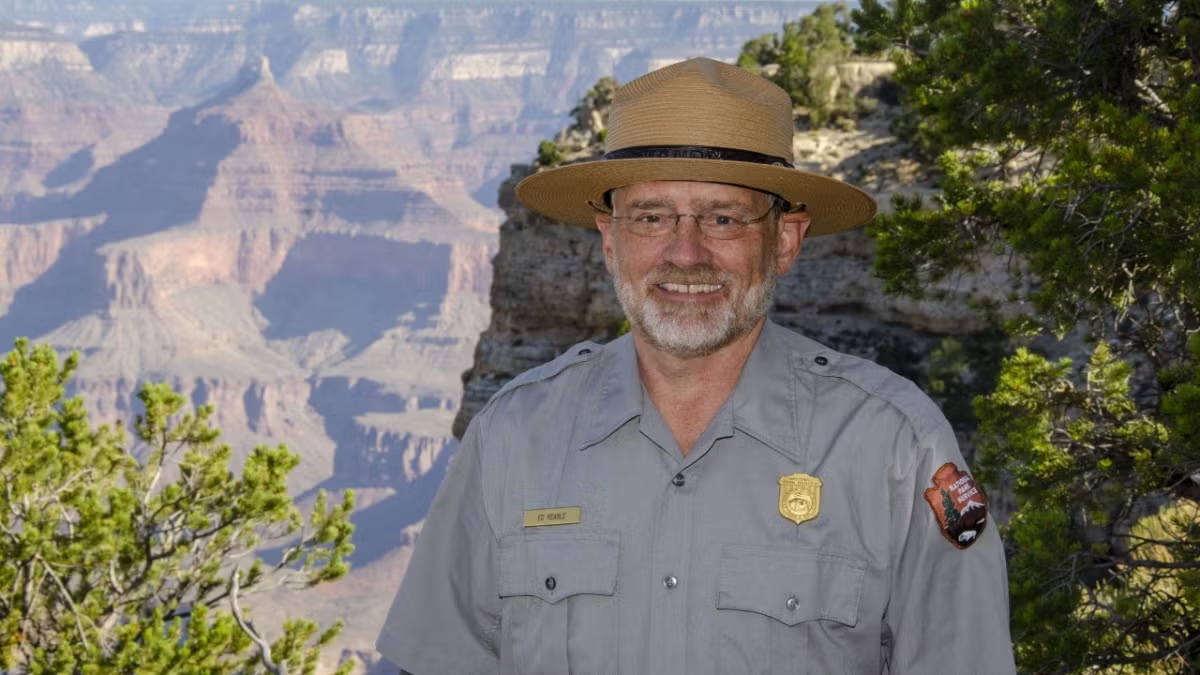
Grand Canyon National Park superintendent visits ASU, shares about efforts to welcome Indigenous voices back into the park
There are 11 tribes who have historic connections to the land and resources in the Grand Canyon National Park. Sadly, when the park was created, many were forced from those lands, sometimes at…
ASU film professor part of 'Cyberpunk' exhibit at Academy Museum in LA
Arizona State University filmmaker Alex Rivera sees cyberpunk as a perfect vehicle to represent the Latino experience.Cyberpunk is a subgenre of science fiction that explores the intersection of…

Honoring innovative practices, impact in the field of American Indian studies
American Indian Studies at Arizona State University will host a panel event to celebrate the release of “From the Skin,” a collection over three years in the making centering stories, theories and…
